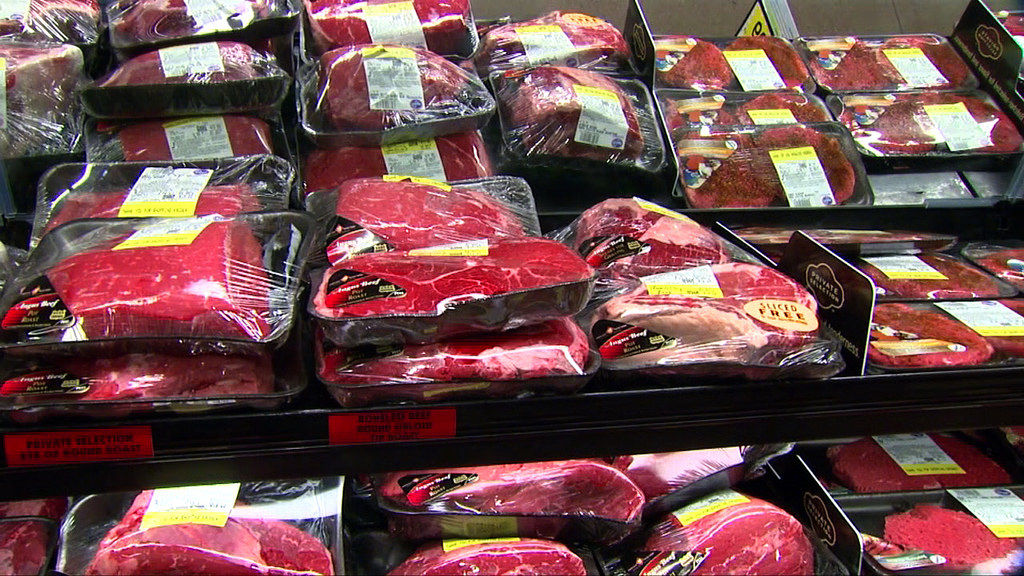It’s almost grilling season (as if it ever ends), and there is nothing more enjoyable than putting a thick, well-marbled and perfectly seasoned rib-eye on the grill (preferably charcoal)!
The sizzle, smoke and the aroma mean there is something wonderful going on. Before long, it is removed from the flame, and after the requisite amount of “rest,” you slice into that steak, take a bite and voila, the taste overwhelms the senses! Beef, it’s what’s for dinner! But is it?

Beef consumption per person is falling. It used to hover around 80 pounds per person each year during the 1970s and 1980s, surpassing 90 pounds during the United States bicentennial year and into 1977, based on data from the U.S. Department of Agriculture’s Economic Research Service.
Then in the late 1980s, consumers turned away from beef, dropping below 70 pounds consumed each year to about 65 pounds through 2008. From there they ate less to a low of 54 pounds in 2015. Since then, the consumer returned to beef, but not by much and not exceeding 60 pounds per person, peaking at 59 pounds in 2022. During 2023, the consumer reversed course and again started to eat less beef.
While people are eating less beef, the population of the U.S. continues to grow, about 0.8% per year since 2000 to more than 335 million people in 2023. A larger population has offset the drop in consumption per person so total beef consumption has remained elevated.
However, total beef consumed peaked at a record 28.2 billion pounds in 2022, slipping to 27.8 billion in 2023, and it will retract further through 2024.
Beef grounded down and chicken gobbled up
The consumer did not abandon proteins as much as diverting to other meat types, predominantly poultry, specifically chicken. In fact, consumers did not just walk away from beef, they ran to chicken, gobbling it up as they went.
During the early 1970s, consumers ate about 50 pounds of poultry per year. From the late 1970s they kicked it into high gear and peaked at more than 100 pounds in 2007. Talk about finger licking good! However, they pulled back from 2008 through 2015, hovering around 100 pounds each year.
n 2016 their appetites were reinvigorated (remember the chicken sandwich wars coming out of COVID-19?) and are now approaching 120 pounds eaten by each person in the U.S. in one year.
As far as pork consumption is concerned, it has remained relatively flat, with consumers eating about 50 pounds per year.

Beef prices emblematic of consumer inflation woes
Consumer demand plays a crucial role in shaping the meat industry. As economic conditions fluctuate, so do consumer preferences and spending habits. Several factors influence meat consumption patterns.
One, there are supply crunches. As highlighted in the previous Horizons column on May 6 (Cattle cycle bottoms to historic low. Will peak be historic low?), ongoing supply issues, challenges and cycles are impacting beef availability, leading to higher prices.
As mentioned earlier, there are alternative proteins such as chicken that consumers have flocked to.
Most importantly, the consumer is experiencing inflation pain with persistently high prices across various sectors. Inflation affects consumers’ purchasing power, from where they eat to what they buy at the grocery.
Beef prices faced imperiled risk during the COVID-19 pandemic due to supply chain disruptions including labor shortages, freight interruptions and high rates, a slight improvement in demand, cattle shortages and other, similar considerations.

The price history is shown in the above chart.
Since the pandemic, choice wholesale boxed beef cutout values have remained above $225 per hundred weight, and during 2021 surged above $300 , according to USDA-ERS. (The spike during the early period of COVID-19 is notable.) Through 2022 the cutout price held around $250 per CWT, but returned above $300 through 2023 and into 2024, mainly on a shortage of cattle.
As consumers adapt to changing economic conditions and explore alternative protein options, the beef industry faces challenges to regain and retain a place on the dinner plate. Understanding these consumption patterns is essential for producers, retailers and policymakers alike.
Remember, the meat on the dinner plate reflects not only consumer preferences but also broader economic forces. Whether it is a juicy steak or a chicken breast, the choices consumers make impact an entire industry.
Sign up for HPJ Insights
Our weekly newsletter delivers the latest news straight to your inbox including breaking news, our exclusive columns and much more.
Ken Eriksen can be reached at [email protected].




